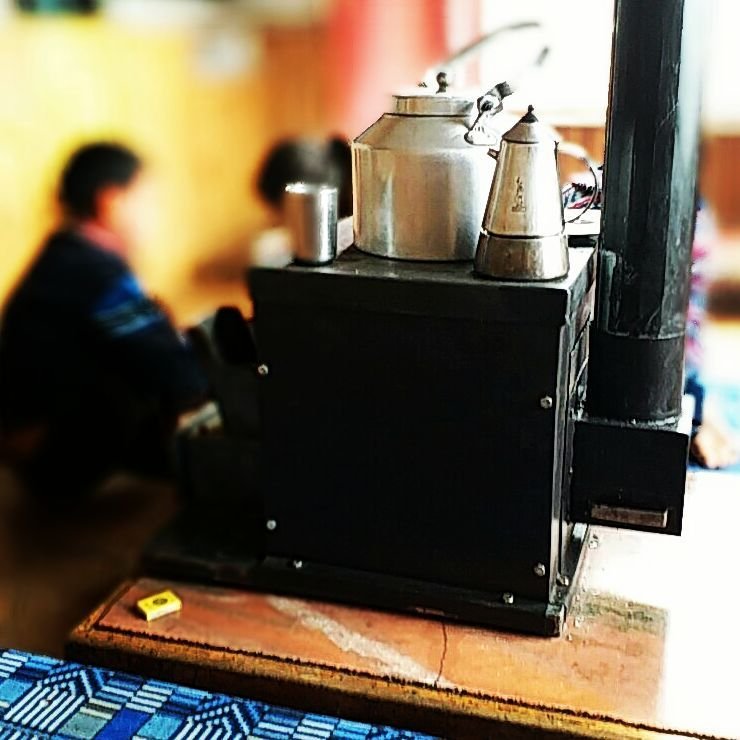
Something about these pictures sum up what I’ve been doing for the last 2 years of my life. Finally I am getting to see these stoves being used in family homes in the Himalayas. And the response from the kids is exactly what it should be…
‘Yeah, whatever. Warm is good. What’s for dinner?’


The whole point of this project is to make a stove where the impact in the home (in terms of usage) should be minimal, whereas the impact in the forest, the air and the wallet is significant.
By adapting existing technology already used and tested in other parts of the world to the Himalayan context is key to the success of this project. We want people to be able to use the stoves without having to change their habits. If they did, we know that it would not be as successful as it could be.


One of the key habits for many families is being able to sit on or near to the ground and make chapati on top of the stove. Wood fired heat is unique, as any baker will tell you. If you can make your bread in a wood fired oven, it has a special flavour. Same is true for chapati made on a wood fired stove. So this was our challenge. We knew we could make a stove that worked, was highly efficient, made almost no smoke, but it was still a bit high.
So this last week has been a breakthrough! We reduced the height from 26 inches down to 18, making it cleaner, hotter and easier to use in the process. We’re not finished innovating either. The ashtray is getting bigger, the exhaust system is getting mods that make it easier to light, and with adjustable heat flow control.


There seems to be no end to the ways we can keep on improving this, but right now, we know that we have a stove that as it is, will revolutionize the way people heat their homes in the Himalayas.
Stay tuned… this is only going to get better!





From all the pictures seen, the height of the chimney is not clear. I am curious to know the height of the chimney.
Secondly, is this stove really smokeless that we can place it in the middle of the room ?
I am interested in this stove as I am from the NE India and our winter are cold.
Hi, thanks for your questions. The chimney is meant to go out through the roof and ideally a bit more for best airflow. When we say smokeless, we mean there is no visible smoke after 15 minutes from lighting, but still there is some when starting and ending the fire. We would always suggest that you have a chimney if the stove is inside the home.
I am particularly interested in heating a 30 x 30ft concrete house in Manali. I was attracted to the possibility of being able to feed longer pieces of wood for the sake of not having to stoke the fire so often. It seems that the stove above has that possibility if I am not mistaken. Will the new stoves to come increase the burn time in the stove without stoking, putting more wood in the fire or is the batch idea you have pursued in the Eco1 sufficient? How many hours can go between stoking the fire before the fire goes out? What about having the vertical feed for wood to allow for longer burns? You are doing a wonderful thing with these stoves for individuals and the environment. I wish you all the best and look forward to purchasing a stove from you next year.
Hi Peter, sorry for the long delay in replying… I missed your comment here. The reload period seems to average around 30 mins, depending on the user, the kind of wood, the settings of airflow, etc. This can be extended for slower more efficient combustion with adjustment to the airflow from the rear pre-heat air port. With regards to the size of room and the fact that it is concrete, I suggest our bigger stoves which we are just now testing (Eco2 and Eco3)… images and vids are going up on the Fb page over the coming days.
all disign plz